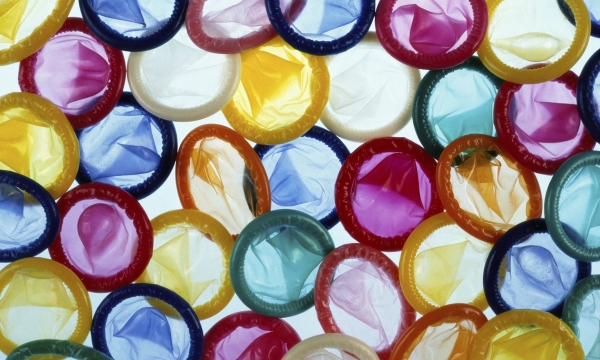When we think about sex, people consider their own needs, and, if they’re a decent person, those of their sexual partners as well. Rarely are the needs of the environment considered in the bedroom. However, the sustainability of contraception habits is an arena in which sexual sustainability and environmental health overlap.
Of the 6.3 billion tons of plastic produced since the 1950s, only nine per cent has been recycled, while the rest has been dumped into landfills or natural environments that frequently connect to oceans. Unsound waste disposal can impact the environment through soil and water contamination. The high levels of methane gas produced at waste disposal sites also contribute to overall greenhouse gas emissions.
In the last few years, many governments have implemented measures to combat the excessive use of plastics such as the introduction of levies on plastic bags as well as bans on plastic containers and straws. Consumer goods giants have also stepped up: McDonald’s, for instance, plans to make all of its packaging from recycled, renewable sources by 2025. Collective action against garbage is also being taken on an individual scale.
As individuals evaluate and mitigate their contributions to waste and pollution, achieving a greener sex life is an often-overlooked responsibility. An enormous contributor to waste is single-use garbage, particularly plastic bottles, containers, bags, and condoms. As one of the most popular forms of contraception, condoms have been essential to curbing population growth . For instance, Mr Condom, a contraception campaign in Thailand, reduced the country’s rate of HIV by 90 per cent and number of children from 7.5 to 1. Vital for protecting STIs, Healthy McGill distributed upwards of 20,000 condoms across campus in the 2017-2018 school year.
Indirectly, condoms have a positive influence for the environment; by preventing pregnancy, any form of contraception or family planning helps reduce the pressure that the human population puts on the planet and its resources. Despite the crucial benefits of contraception on the human population, the direct environmental impact of condoms is not so positive.
While there are many different types of condoms with varying properties, latex condoms are the most popular. Latex is made out of the sap of rubber trees—a renewable resource—and is theoretically a sustainable, biodegradable material. However, since most condoms are made with additives to prevent breakage, the latex is more difficult to break down, lubricant further inhibits latex’s ability to decompose.
“Generally, if flushed down the toilet, which they should not be, [condoms] are removed during the water purification process and end up in landfills,” Joe Schwarcz, a professor in the Department of Chemistry and the director of McGill University’s Office for Science and Society, said in an interview with The McGill Tribune. “ [The] same happens if they are put into the garbage. In the oxygen-deprived (anaerobic) environment of a landfill, it is very doubtful that they will biodegrade.”
Schwarcz explained that, when latex condoms are flushed down the toilet, they are no longer biodegradable because they are wet. Despite being a natural material, latex is incredibly slow to decompose and contributes to the waste populating Earth’s land and oceans. Additionally, despite innovative efforts to create reusable condoms, there is no viable, recyclable product currently on the market.
For those seeking to be more environmentally-conscious in their sexual ventures, a new brand of condoms named Sustain offers a more sustainable, non-toxic, and vegan alternative to the traditional Trojans. The latex in Sustain condoms comes from a fair trade rubber plantation, and the condoms are free from nitrosamines and other possible carcinogens which are found in the products of many popular condom brands. While growing in popularity with more than $1 million in annual sales, the environmentally-friendly condoms have yet to revolutionize the market. Nevertheless, the options are available for those who want to ‘go green.’






